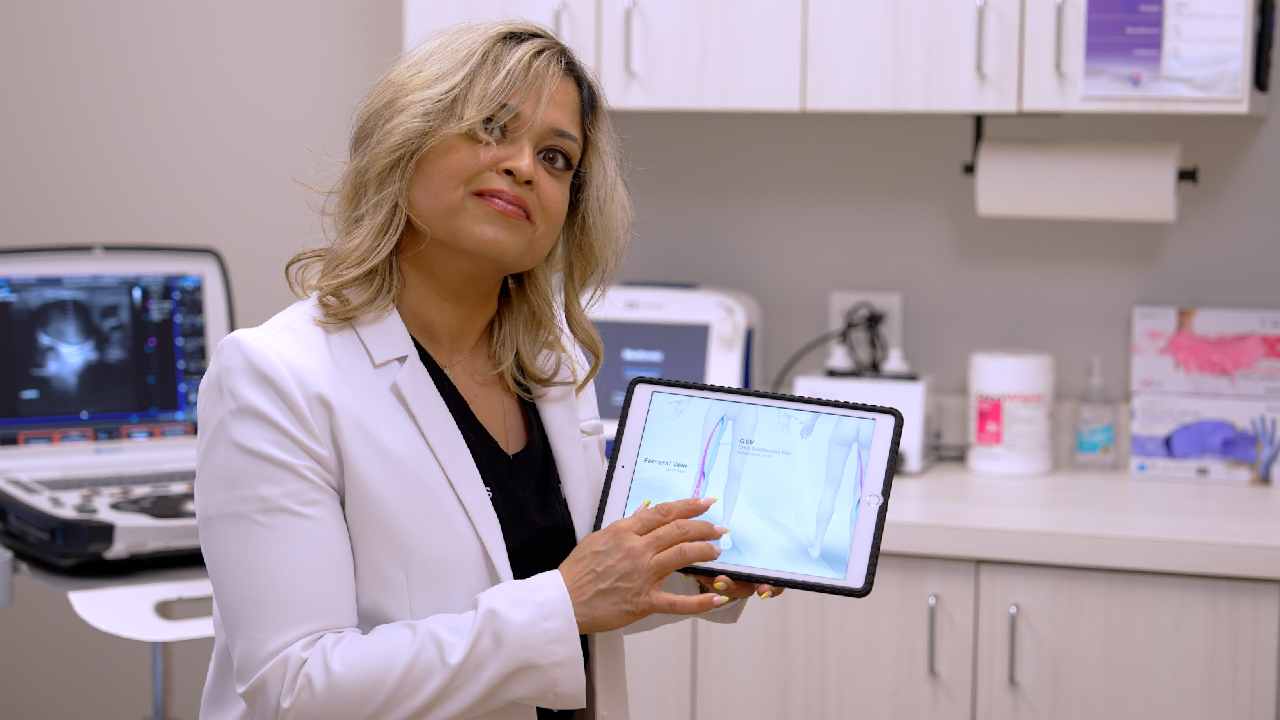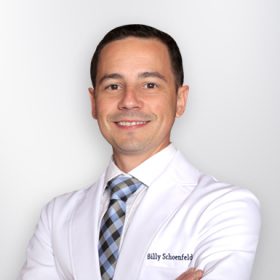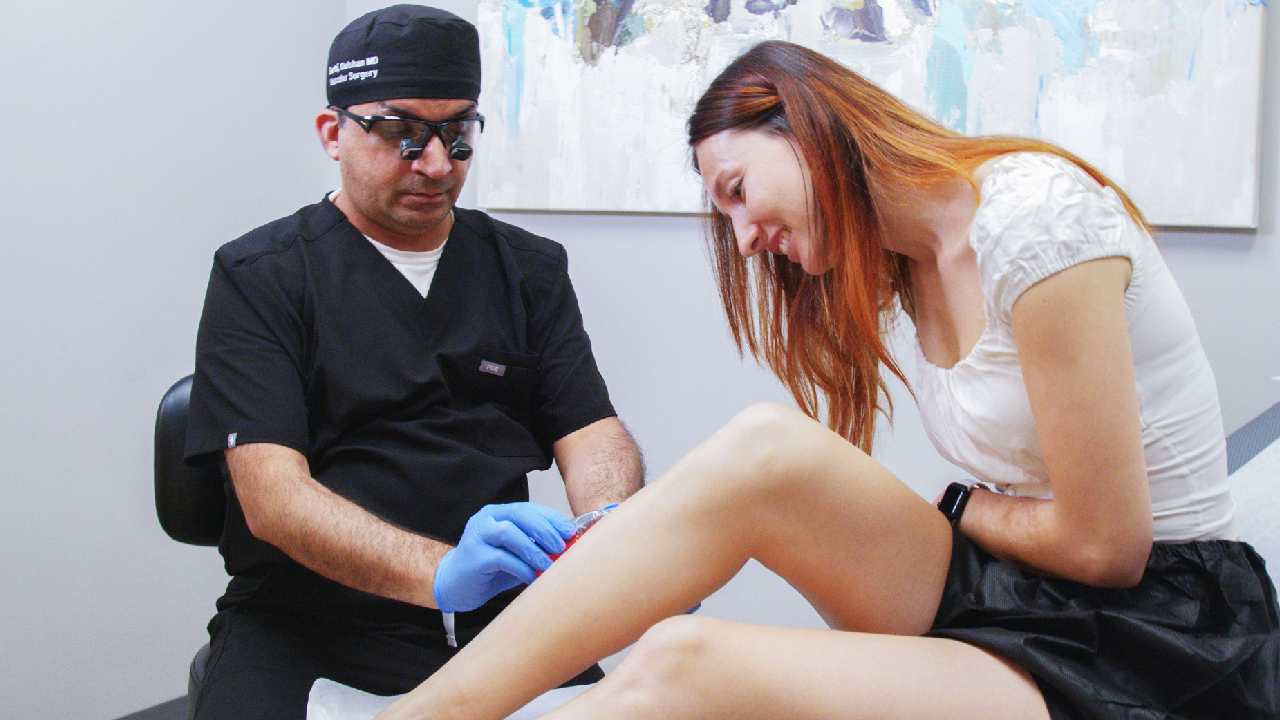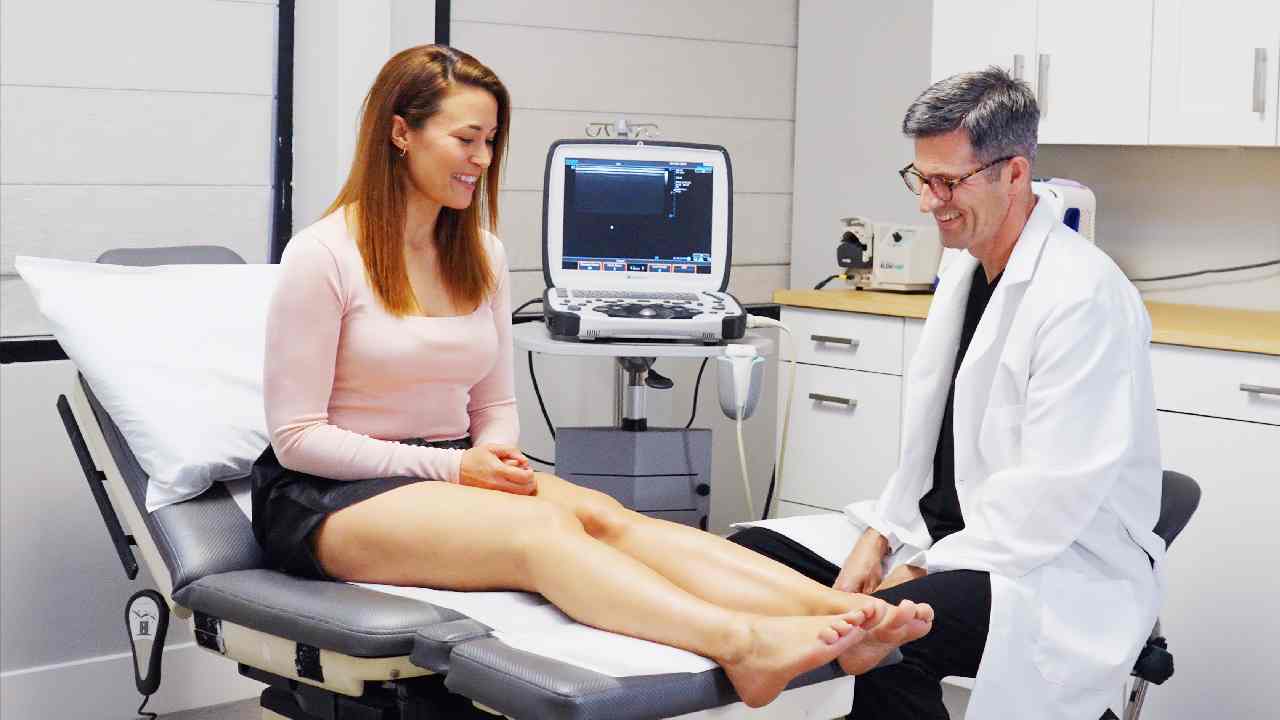
What Is Vein Stripping? Minimally Invasive Alternatives
When dealing with varicose veins, many people used to rely on vein stripping as a standard surgical treatment. This traditional procedure involves the removal of varicose veins through long incisions in the skin, often leading to a lengthy recovery period and increased risks of complications. Although vein stripping was once the go-to method for varicose veins surgery, it has now been largely replaced by minimally invasive vein treatments that are less painful, require no downtime, and offer faster results.
Vein Treatment Clinic offers advanced, minimally invasive vein treatments that are safer and more effective and target the root cause of vein issues. Our board-certified vein doctors specialize in the most up-to-date techniques for treating spider veins and varicose veins, ensuring you receive personalized, precise care. Let’s explore vein stripping in detail, why it’s no longer recommended, and the modern alternatives that can transform your vein health.
What is vein stripping?
Vein stripping is an older surgical technique for removing large varicose veins. In this procedure, the vein doctor makes several incisions along the leg and removes the damaged vein. It was primarily used to treat more severe cases of varicose veins, where the veins are visibly bulging and cause discomfort or other complications. The procedure is typically performed under general anesthesia and can require a significant amount of time for recovery.
While vein stripping was once the standard approach, advances in vein treatments have made it less popular. Today, there are more effective, less invasive treatments that allow patients to avoid the significant scarring, long recovery times, and risks associated with vein stripping.
What happens during vein stripping?
During vein stripping, the surgeon follows these general steps:
- Anesthesia: The procedure is typically done under general or local anesthetic.
- Incision: Small incisions are made in the skin to access the affected veins.
- Vein removal: A long, flexible wire-like instrument is inserted into the vein to pull it out.
- Sutures: The incisions are closed with stitches after the vein is removed.
- Post-procedure care: Patients may require compression stockings and follow-up appointments to ensure proper healing.
Why vein stripping is NOT recommended anymore:
- Long recovery time
- Increased risk of complications
- Significant scarring
- General anesthesia required
- Painful procedure
- Inability to target specific veins
- High risk of recurrence
Minimally invasive vein treatments: The superior alternatives
Vein Treatment Clinic offers minimally invasive vein treatments because they are more effective and offer quicker recovery times and fewer risks than traditional vein stripping. Our vein doctors use advanced technologies to treat varicose veins and spider veins with precision, ensuring the best outcomes for our patients. We believe in providing options that allow you to return to your normal activities quickly, without the need for long hospital stays or extensive downtime.
Endovenous Laser Ablation (EVLA)
Endovenous Laser Ablation (EVLA) uses laser energy to treat varicose veins. The vein doctor inserts a thin catheter into the affected vein, and a laser fiber at the tip of the catheter heats and closes the vein. This vein treatment is minimally invasive, requiring only a small incision. EVLA effectively seals the vein shut, causing it to eventually collapse and be absorbed by the body.
Radiofrequency Ablation (RFA)
Radiofrequency Ablation (RFA) is similar to EVLA but uses radiofrequency energy instead of laser heat to treat varicose veins. A catheter is inserted into the vein, and radiofrequency energy is applied to the vein walls. The energy causes the vein to shrink and close, rerouting blood flow to healthier veins. This method is highly effective and requires only small incisions.
Sclerotherapy
Sclerotherapy is a common spider vein treatment. During the procedure, a sclerosant solution is injected into the affected vein. This solution causes the vein to collapse and be reabsorbed by the body. Sclerotherapy is quick, minimally invasive, and involves no incisions. It’s an ideal treatment for patients who want to target smaller veins.
VenaSeal™ Closure System
VenaSeal™ is a cutting-edge treatment that uses medical adhesive to seal varicose veins. A catheter is inserted into the vein, and a special adhesive is delivered to close it. Over time, the body absorbs the vein, redirecting blood flow to healthier veins. VenaSeal™ is a great option for patients who want a non-thermal treatment with minimal pain and quick recovery.
ClariVein®
ClariVein® is a newer treatment for varicose veins. It combines mechanical and chemical methods to close off the affected vein. A catheter is inserted into the vein, and a rotating tip at the end of the catheter gently ablates the vein walls while delivering a sclerosing agent. This procedure is effective, minimally invasive, and typically involves very little discomfort.
Ambulatory Phlebectomy
Ambulatory Phlebectomy is a procedure used to remove smaller varicose veins near the surface of the skin. This technique involves making tiny punctures in the skin through which the veins are gently pulled out. Since there are no major incisions, the recovery time is minimal, and patients can return to normal activities shortly after the procedure.
Why minimally invasive vein treatments are the superior choice:
- Faster recovery times
- Minimal scarring
- No general anesthesia needed
- Targeted treatment
- Less risk of complications
- Less discomfort during and after the procedure
- Covered by most medical insurance plans
- Highly effective results
FAQs
What is the best spider vein treatment?
The best spider vein treatment depends on the severity and size of the veins. Sclerotherapy is the most commonly recommended treatment for spider veins, as it is quick, minimally invasive, and highly effective. However, if your spider veins are caused by underlying venous insufficiency, you may first need EVLA, RFA, VenaSeal, or another procedure.
How long is recovery after varicose vein surgery?
With traditional varicose vein surgery, recovery can take several weeks due to the invasiveness of the procedure. However, with minimally invasive treatments like EVLA and RFA, recovery time is reduced, and most patients can return to their daily activities within a few days.
Do compression stockings help varicose veins?
Yes, compression stockings for varicose veins are often recommended to reduce symptoms like swelling and discomfort. They work by applying gentle pressure to the legs, helping to improve blood flow and reduce the risk of further vein damage. At Vein Treatment Clinic, our vein doctors may recommend compression stockings as part of your treatment plan.
Are varicose veins surgery and vein stripping the same?
Varicose veins surgery and vein stripping refer to older, more invasive procedures to remove varicose veins. The term “varicose veins surgery” may refer to several types of surgery, including vein ligation. However, “vein stripping” is a more specific procedure.
Contact us to schedule a consultation and learn more about how we can help you with minimally invasive vein treatments. Our vein clinics are conveniently located across New York, Long Island, California, Maryland, and New Jersey. Visit your nearest vein treatment clinic to learn how we can help you achieve healthier legs.
FEATURED POSTS BY VEIN DOCTORS














